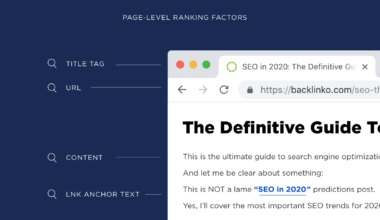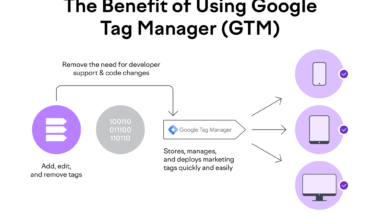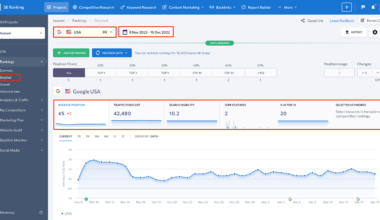Introduction to Long-Tail Keywords
As a content creator or website owner, you may have heard about the importance of using long-tail keywords for SEO. But, what are long-tail keywords, and why are they important?
A long-tail keyword is a specific phrase or a combination of words that users search for on search engines. Unlike short-tail keywords, which are broad and generic, long-tail keywords are more targeted and specific to the user’s search intent. For example, “best running shoes for women with flat feet” is a long-tail keyword, while “running shoes” is a short-tail keyword.
The benefits of using long-tail keywords are numerous. First, they have less competition than short-tail keywords, making it easier for you to rank higher in search engine results pages (SERPs). Second, long-tail keywords attract more qualified leads, as users who search for them are more likely to convert into customers or subscribers. Finally, using long-tail keywords in your content helps you establish your authority and expertise in a particular niche.
Finding long-tail keywords may seem daunting at first, but there are several tools you can use to make the process easier. Keyword research tools like Google Keyword Planner, Ahrefs, and SEMrush can help you find long-tail keywords related to your niche. You can also use Google autocomplete, which suggests long-tail keywords based on what users commonly search for.
Once you have a list of long-tail keywords, the next step is to implement them in your SEO strategy. You can use them in your website’s meta descriptions, headers, content, and alt tags. However, it is important to use them naturally and avoid keyword stuffing, which can hurt your rankings.
Measuring the success of your long-tail keyword strategy is crucial. You can use tools like Google Analytics and Google Search Console to track your website’s traffic, click-through rates, and conversions. This data can help you refine your long-tail keyword strategy and improve your SEO performance.
In conclusion, using long-tail keywords is essential for long-term SEO success. By targeting specific and relevant keywords, you can attract more qualified leads, establish your authority, and improve your rankings. With the right tools and strategy, you can harness the power of long-tail keywords and take your SEO to the next level.
Benefits of Using Long-Tail Keywords
Using long-tail keywords is a powerful SEO strategy that can help you achieve your business goals. Here are some of the benefits of using long-tail keywords:
Less Competition:
Long-tail keywords have less competition than short-tail keywords, making it easier for you to rank higher in SERPs. As a result, you can attract more qualified traffic to your website, which can lead to more conversions.
Higher Conversion Rates:
Long-tail keywords are more specific to the user’s search intent, which means that users who search for them are more likely to convert into customers or subscribers. For example, if someone searches for “best running shoes for women with flat feet,” they are more likely to make a purchase than someone who searches for “running shoes.”
Establish Authority and Expertise:
Using long-tail keywords in your content can help you establish your authority and expertise in a particular niche. By providing valuable and relevant content that addresses specific search queries, you can build trust with your audience and position yourself as an industry leader.
Improve User Experience:
Long-tail keywords help you create more targeted and relevant content that meets the user’s search intent. By providing valuable and informative content that answers specific questions or solves specific problems, you can improve the user experience and increase engagement on your website.
Long-Term SEO Success:
Long-tail keywords are an essential part of any long-term SEO strategy. By targeting specific and relevant keywords, you can attract more qualified leads, improve your rankings, and establish your authority in a particular niche. With the right tools and strategy, you can harness the power of long-tail keywords and achieve long-term SEO success.
In conclusion, using long-tail keywords is a crucial SEO strategy that can help you achieve your business goals. By targeting specific and relevant keywords, you can attract more qualified leads, establish your authority, and improve your rankings. With the right tools and strategy, you can harness the power of long-tail keywords and take your SEO to the next level.
How to Find Long-Tail Keywords
Finding long-tail keywords is an integral part of any successful SEO strategy. Here are some tips on how to find long-tail keywords:
1. Brainstorming:
Start by brainstorming a list of keywords related to your niche. Think about what your target audience would search for and what problems or questions they may have. Use a spreadsheet or a notepad to keep track of your ideas.
2. Google Autocomplete:
Google autocomplete is a powerful tool that suggests long-tail keywords based on what users commonly search for. Type in a broad keyword related to your niche, and Google will provide a list of related long-tail keywords. For example, if you type in “running shoes,” Google may suggest “best running shoes for women with flat feet.”
3. Google Keyword Planner:
Google Keyword Planner is a free tool that helps you find long-tail keywords related to your niche. Simply enter a broad keyword, and Google will provide a list of related keywords along with their search volume and competition level.
4. Ahrefs:
Ahrefs is a popular SEO tool that helps you find long-tail keywords related to your niche. Enter a broad keyword, and Ahrefs will provide a list of related keywords along with their search volume, competition level, and other metrics.
5. SEMrush:
SEMrush is another popular SEO tool that helps you find long-tail keywords related to your niche. Enter a broad keyword, and SEMrush will provide a list of related keywords along with their search volume, competition level, and other metrics.
6. Online Forums and Communities:
Online forums and communities related to your niche can be a goldmine of long-tail keywords. Look for common questions and problems that people are discussing, and use those as inspiration for your long-tail keywords.
In conclusion, finding long-tail keywords is essential for any successful SEO strategy. By using tools like Google Autocomplete, Google Keyword Planner, Ahrefs, and SEMrush, you can identify relevant long-tail keywords with low competition. Brainstorming and analyzing online forums and communities can also provide inspiration for long-tail keywords. Once you have a list of long-tail keywords, implement them naturally throughout your content to attract more qualified leads and establish your authority in your niche.
Implementing Long-Tail Keywords in SEO Strategy
Once you have identified your list of long-tail keywords, the next step is to implement them in your SEO strategy. Here are some tips on how to do it effectively:
1. Use Long-Tail Keywords in Your Content:
One of the best ways to use long-tail keywords is to incorporate them naturally into your content. Use them in your headers, meta descriptions, and alt tags. Make sure that they fit into your content naturally and avoid keyword stuffing, which can hurt your rankings.
2. Create High-Quality Content:
Creating high-quality content that is informative and relevant to your target audience is key to a successful SEO strategy. Use your long-tail keywords to create content that answers specific questions or solves specific problems. By providing valuable content that meets the user’s search intent, you can improve your rankings and attract more qualified leads.
3. Optimize Your Website:
Optimizing your website is crucial for improving your SEO performance. Use your long-tail keywords in your website’s meta descriptions, headers, and alt tags. Make sure that your website is mobile-friendly, has a fast loading speed, and is easy to navigate.
4. Monitor Your Performance:
Monitoring your website’s performance is essential for refining your long-tail keyword strategy. Use tools like Google Analytics and Google Search Console to track your website’s traffic, click-through rates, and conversions. This data can help you identify which long-tail keywords are working and which ones need improvement.
5. Update Your Content:
Updating your content regularly is important for maintaining your website’s relevance and authority. Use your long-tail keywords to update your existing content with new information or to create new content that addresses specific search queries.
In conclusion, implementing long-tail keywords in your SEO strategy can help you improve your rankings, attract more qualified leads, and establish your authority in your niche. Use them naturally in your content, optimize your website, and monitor your performance to refine your strategy. By creating high-quality content that addresses specific search queries, you can improve your SEO performance and achieve long-term success.
Measuring Success with Long-Tail Keywords
Measuring the success of your long-tail keyword strategy is crucial for improving your SEO performance. Here are some tips on how to measure the success of your long-tail keyword strategy:
1. Track Your Website’s Traffic:
Tracking your website’s traffic is essential for measuring the success of your long-tail keyword strategy. Use tools like Google Analytics to track your website’s traffic and identify which long-tail keywords are driving the most traffic to your website. You can also track the bounce rate, which is the percentage of users who leave your website after viewing only one page. A high bounce rate may indicate that your content is not relevant to the user’s search intent.
2. Monitor Your Click-Through Rates:
Monitoring your click-through rates (CTR) is important for measuring the success of your long-tail keyword strategy. CTR is the percentage of users who click on your website’s link after seeing it in the search engine results pages (SERPs). Use tools like Google Search Console to track your website’s CTR and identify which long-tail keywords are generating the most clicks.
3. Measure Your Conversions:
Measuring your website’s conversions is crucial for determining the ROI of your long-tail keyword strategy. Use tools like Google Analytics to track your website’s conversions, such as form submissions, purchases, or sign-ups. By measuring your conversions, you can identify which long-tail keywords are driving the most qualified leads and adjust your strategy accordingly.
4. Refine Your Strategy:
After measuring the success of your long-tail keyword strategy, it’s important to refine your strategy based on the data. Identify which long-tail keywords are working and which ones need improvement. Use this information to create more targeted and relevant content that meets the user’s search intent. Refining your strategy can help you improve your SEO performance and achieve long-term success.
In conclusion, measuring the success of your long-tail keyword strategy is crucial for improving your SEO performance. By tracking your website’s traffic, click-through rates, and conversions, you can identify which long-tail keywords are working and which ones need improvement. Use this information to refine your strategy and create more targeted and relevant content that meets the user’s search intent. With the right tools and strategy, you can harness the power of long-tail keywords and achieve long-term SEO success.
Final Thought: Long-Tail Keywords for Long-Term SEO Success
Using long-tail keywords is an essential part of any successful SEO strategy. By targeting specific and relevant keywords, you can attract more qualified leads, improve your rankings, and establish your authority in your niche. However, it is important to remember that SEO is a long-term game, and results may not be immediate. It takes time, effort, and patience to see the benefits of using long-tail keywords.
To achieve long-term SEO success with long-tail keywords, it is important to have a solid strategy in place. This includes identifying relevant long-tail keywords, creating high-quality content that addresses specific search queries, and optimizing your website for search engines. It also involves monitoring your performance and refining your strategy based on the data.
Remember that SEO is not a one-time task but an ongoing process. As search algorithms and user behavior change, it is important to adapt your strategy and stay up-to-date with the latest trends and best practices. By investing in a long-term SEO strategy that incorporates long-tail keywords, you can establish your authority, attract more qualified leads, and achieve long-term success.
In conclusion, using long-tail keywords is an effective and powerful SEO strategy that can help you achieve your business goals. By targeting specific and relevant keywords, you can improve your rankings, attract more qualified leads, and establish your authority in your niche. However, it takes time, effort, and patience to see the benefits of using long-tail keywords. With the right tools, strategy, and mindset, you can harness the power of long-tail keywords and achieve long-term SEO success.






















